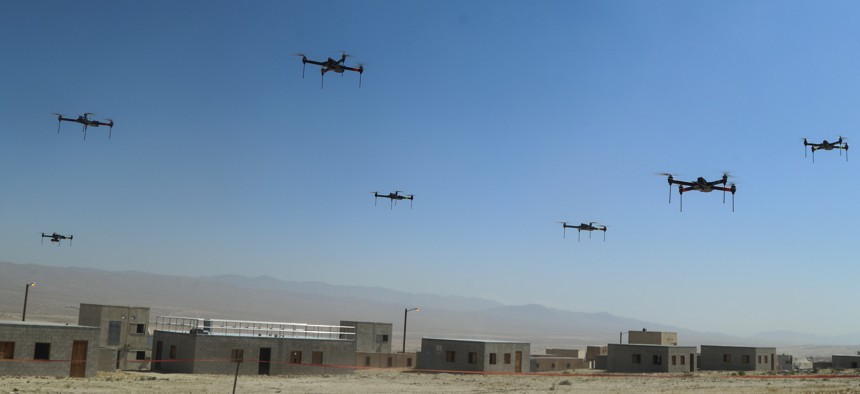WILLIAM D. HARTUNG

As Deputy Defense Secretary Kathleen Hicks announced to the world at this week’s meeting of the National Defense Industrial Association, the Pentagon is bullish on a new approach to the challenge posed by China, as embodied in the “Replicator” initiative, which involves “helping us to overcome the PRC’s biggest advantage, which is mass…More ships. More missiles. More people.”
Hicks went on to outline the key thrust of the new approach: “To stay ahead, we’re going to create a new state of the art—just as America has before—leveraging attritable, autonomous systems in all domains—which are less expensive, put fewer people in the line of fire and can be changed, updated or improved with substantially shorter lead times.” On the face of it, this seems like a better bet than building ever-more-complex systems that take decades to develop and deploy, are extremely difficult to maintain, and are in some cases far more expensive than the systems adversaries can use to counter them.
But in the quest to change how the Pentagon does business it will be important to be humble about the likely effectiveness of swarms of drones; unpiloted vehicles in the air, on land, and at sea; and AI-driven decision-making systems that can dramatically shorten the “kill chain” from a decision to attack to the arrival of a weapon on its intended target. And it is also necessary to acknowledge that implementing this effort to change how America arms itself for potential conflicts will involve a sharp political clash with Congress over the fates of aircraft carriers, piloted aircraft, and traditional armored vehicles—weapons that provide jobs and incomes in the districts and states of members with the most sway over the size and shape of the Pentagon budget.
Even what may seem like the seminal example of “revolutionary” technologies in warfare—Operation Desert Storm, the 1991 U.S. response to Iraq’s invasion of neighboring Kuwait—involved exaggerated claims of battlefield precision that were only corrected after detailed after-action analyses. As longtime Pentagon critic and defense expert Winslow Wheeler has noted, a post-war Government Accountability Office analysis found that it took many more munitions to destroy key targets than the Pentagon and arms makers had originally asserted. Success rates of key systems like the F-117 stealth aircraft, the Tomahawk land attack missile, and laser-guided bombs were found to be considerably lower than claimed—in some cases, stunningly lower. For example, the GAO’s analysis of Tomahawk use in Desert Storm found that only about half of those missiles launched in that war arrived at their targets. And the agency went on to note that “[o]thers arrived at the designated target area, but impacted so far away from the aimpoint as to only create a crater.”
To cite another telling example, “the claim by DOD and contractors of a one-target, one-bomb capability for laser-guided munitions was not demonstrated in the air campaign where, on average, 11 tons of guided and 44 tons of unguided munitions were delivered on each successfully destroyed target.” That was good enough to defeat a relatively poorly armed adversary, but it was not the performance of the miracle weapons originally advertised. Equally importantly, these capabilities and later refinements were not sufficient to win wars against adversaries with no air forces or significant air defense systems in either Iraq or Afghanistan. War is about far more than having the best bombs and communications systems. If this kind of advantage can be developed vis-a-vis China, it is unlikely to be decisive.
Part of the push for a new generation of weapons and control mechanisms is based on the purported success of drones in the war in Ukraine. But it’s too early to fully evaluate the performance of these systems, or to assess their relevance to a potential conflict with China – a war between nuclear-armed powers that could be an unprecedented disaster for all concerned, drones or no drones.
All of the above suggests that it doesn’t make sense to rush towards the sort of new techno-revolution advocated by Hicks in her NDIA speech without adequate assessment and testing. Most importantly of all, plans to win a war with China must take second place to political and diplomatic initiatives to set rules of the road that make a conflict between Washington and Beijing less likely.
Technological enthusiasm is not a strategy. And without the proper political and diplomatic context, a surge towards capabilities like swarms of drones that can destroy thousands of targets in China on short notice are more likely to accelerate a dangerous arms race than deter a potentially catastrophic conflict.
No comments:
Post a Comment